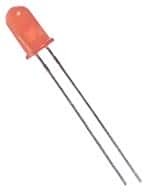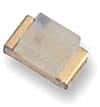A popular concept floats around stating that anti-virus software simply does not work. Some sections of the press are known to propagate that the software products sold by anti-virus companies are rather ineffective in combating computer virus. Studies also influence these views on the efficacy of anti-virus software, such as the one conducted by a digital security agency in the USA. It infers that the high rate of virus growth on the internet outsmarts the bulk of anti-virus software commercially available. These software products fail to keep track of and provide adequate protection to computers against virus. Consequently, the effectiveness of these products is not commensurate with the cost of such software.
Some leading anti-virus providers have openly discarded these findings on grounds of ridiculously small sample sizes to be statistically correct, and declared the methodology used as inappropriate and unsound. They further consider the validation methodology – of simply examining the digital signatures – as poor and unscientific, not having run the study samples on live PC’s that such anti-virus software were actually supposed to protect.
The process of scanning signatures for malware detection is just one among several recognized methods of identifying the source of virus. Real anti-virus protection involves a lot more than that presumed in the aforementioned study. To be really useful, a complete suite of such methods must work in tandem, and that is the real safeguard against virus.
Consider a case of vehicle security, which could be a combination of an ignition lock, a door lock, gear lock, steering lock, immobilizer and a recent addition of GPS tracker, to name a few. Each of these provides a part of the protection using commercially available tools. The owner must decide the type and quantity of these he wants obtain and what he is willing to pay for them. A lopsided decision may defeat the very purpose of protection. It is like one installing a GPS tracker and an immobilizer in his car. A burglar may break the window glass and happily walk away with the expensive stereo, laptops and other valuables in the car, which the GPS tracker, or immobilizer may not be equipped to sense.
It is rather unjust to make a sweeping statement that anti-virus tools are no good in affording protection, without first deciding the level of security desired and having implemented solutions commensurate with such security. One needs to understand, with expert advice where necessary, the implications of using methods like firewalls, anti-phishing, anti-spam and so on, including what each can protect.
Another analogy to elucidate this concept is the performance of an orchestra, which does not depend solely on the violinist or the pianist, or even the entire range of musicians. Other important factors affect the performance, such as the conductor, the acoustics, the seats, the audience, and so on.
Irrespective of what popular opinion makes it out to be, if one is clear what one desires to protect and uses proper tools, it is very unlikely for one to conclude that anti-virus software serves no useful purpose.



